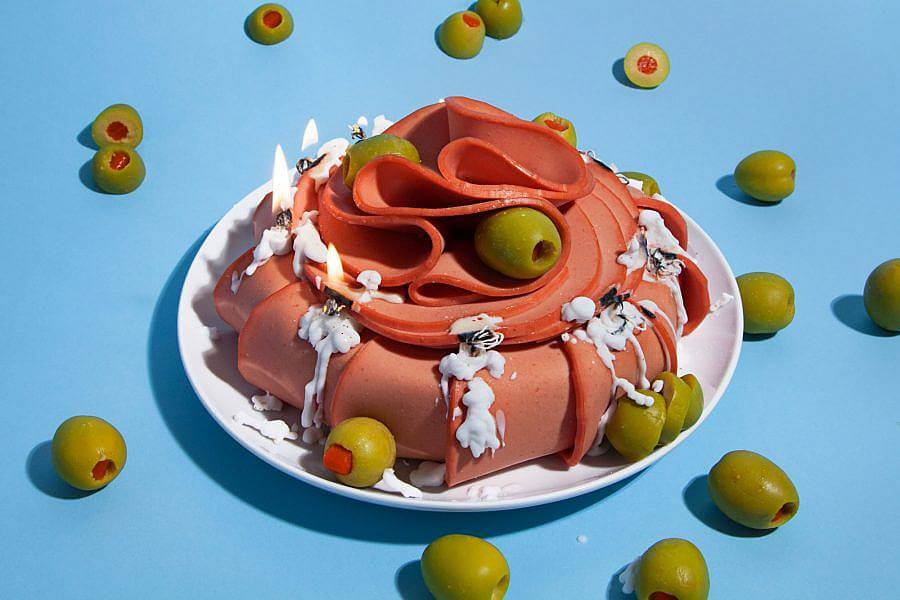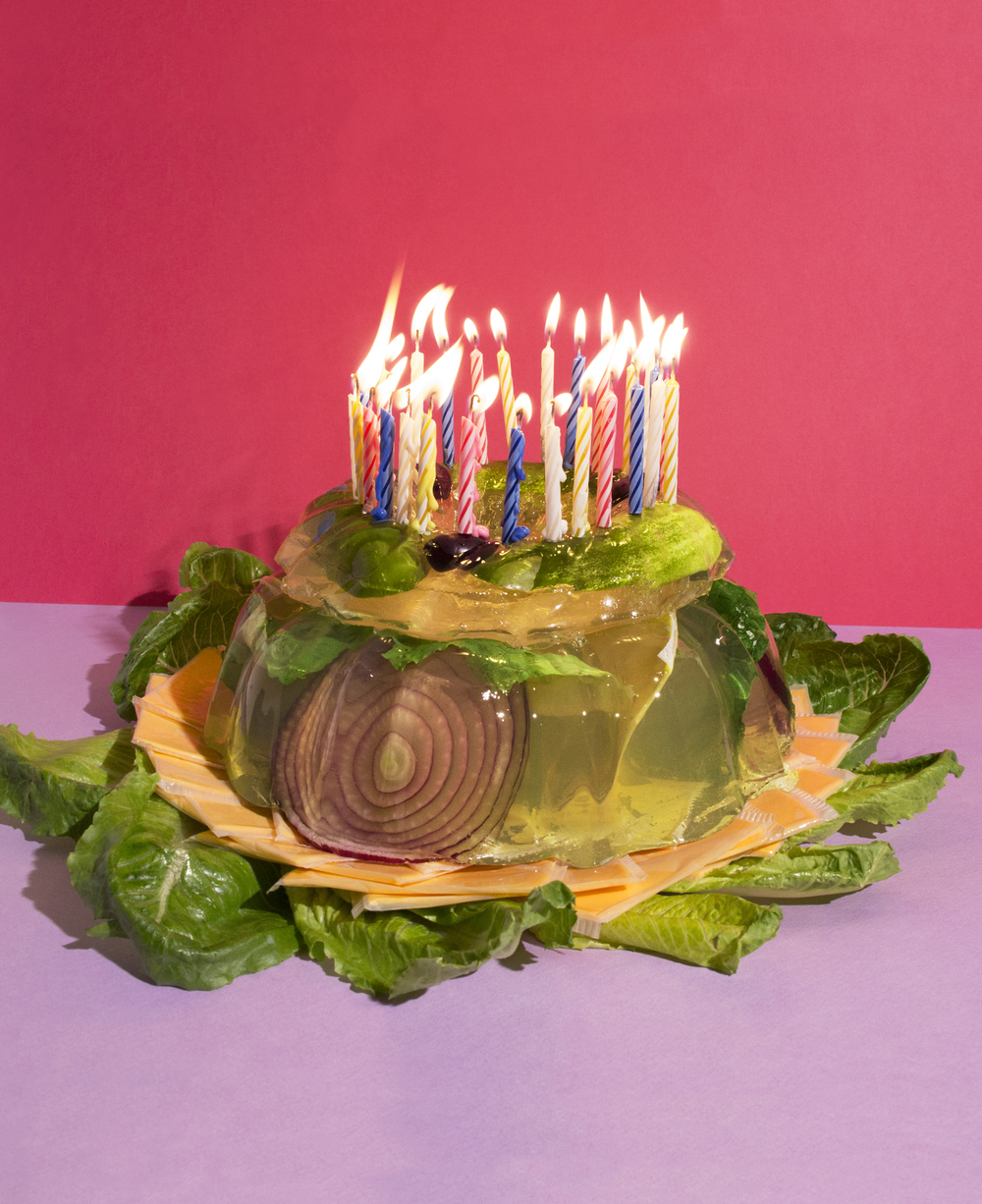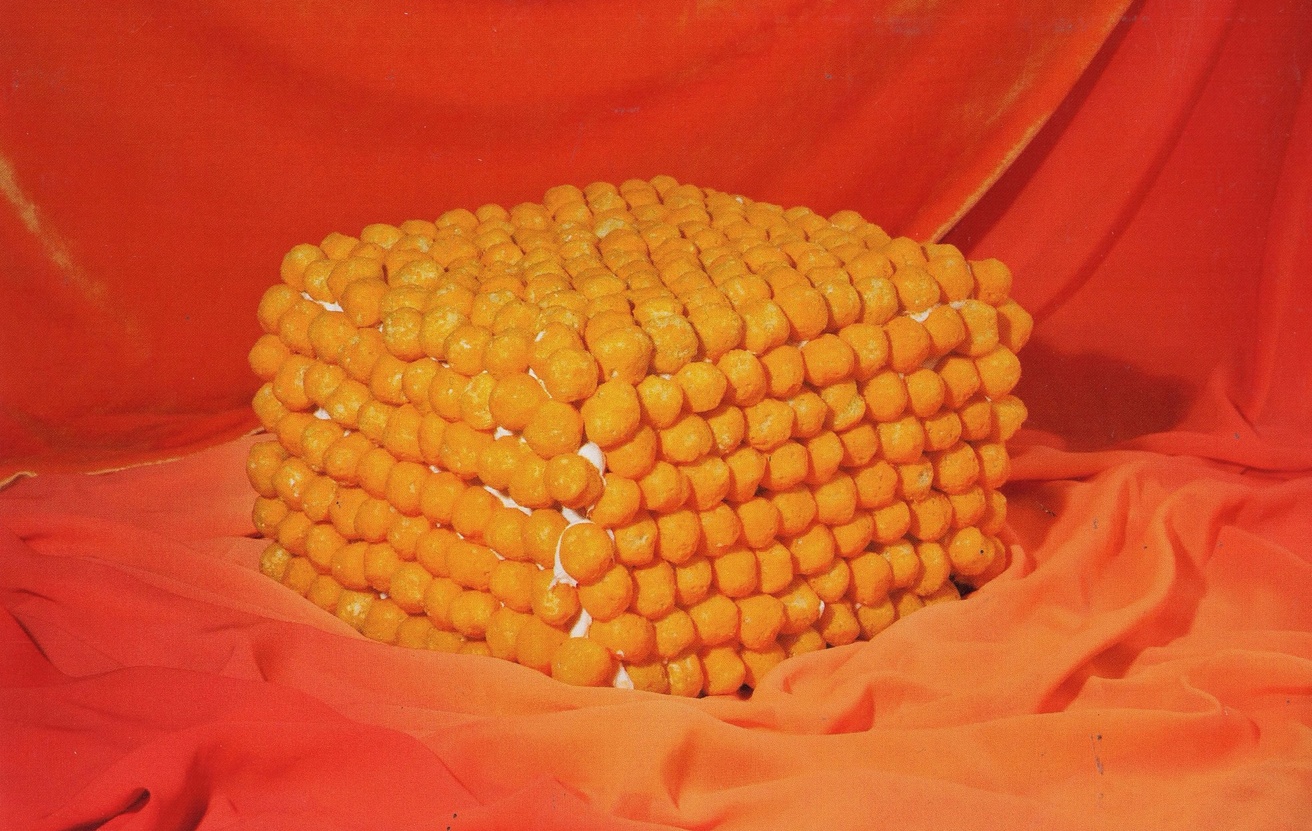
LAZY MOM is a Brooklyn-based collaborative art project between Josie Keefe and Phyllis Ma. Using everyday food items—like fruits and vegetables, eggs, and hot dogs—Keefe and Ma create humorously surreal photos and videos, often with an undercurrent of social commentary. “LAZY MOM is based on an imaginary mother we invented who is too busy making weird arrangements to do her socially prescribed, feminine duty of making kids' lunch or cooking for her husband,” Keefe says. “She's always kind of messing around in the kitchen and making these weird shapes instead of feeding people.” In addition to self-publishing five zines, LAZY MOM has exhibited at NADA New York and collaborated with clients like Giphy and Lucky Peach. They also share new work regularly on instagram. Here, Keefe and Ma discuss the benefits of collaboration and creating your own opportunities by using the resources around you.
What was one of the first pieces where you felt like you were finding your creative voice?
Josie Keefe: Honestly, the first photo we ever took.
Phyllis Ma: Yeah, it’s hanging in my kitchen. It’s a watermelon that has a grapefruit in it, and then the other half of the grapefruit has a kiwi in it. That’s literally the first photo we ever took.
Josie Keefe: That became the cover photo of the first zine. Once we took that photo, we were like, “We can do more stuff with food. This is just scratching the surface.” We worked on that first zine as sort of a one-off project. Based on that photo and other photos, we were like, “Oh, we have some more ideas. Let’s keep going, this is fun.” So it just kind of spiraled from there.
Collaborating can be tricky. It’s almost like being in a relationship — either you have chemistry or you don’t. What do you think makes for a strong creative collaboration?
Phyllis Ma: I think we had really similar tastes and sense of humor and work ethic. We meet up pretty frequently and we communicate a lot. I think that’s important. Also, it’s important to take breaks.
Josie Keefe: Yeah. Pace is important.

What do you do with the food when you’re done?
Phyllis Ma: Well, most of the time, we eat it. Unless if it’s really junk food, like if we put hot dogs in cake, that we won’t eat. But otherwise, with veggies or fruits, we’ll just wash it off and eat it afterwards. I don’t buy meat that often, but I have taught myself how to cook meat and other things leftover from the shoot.
How do you start a new LAZY MOM project?
Phyllis Ma: Well, it’s very different for personal work versus client work.
Josie Keefe: We like to improvise a lot in our personal work. We’ll often just go to the grocery store, see what interests us that day, and start shooting. We usually have an idea, and we’ll shoot it; and then while we’re shooting, we’ll actually get the good ideas from working. It’ll become funnier as time goes on.
How do you know when a project is done? Especially for personal work, where you don’t necessarily have a deadline from a brand?
Phyllis Ma: Well, we always try to set deadlines. That forces the project to be done.
Josie Keefe: I had a friend who said once, “Art is deadlines.” I think that’s really true. If you don’t have a deadline, then you don’t have to get it done.
How do you push yourselves to the next level creatively, whatever that might be?
Josie Keefe: When we first started this, neither of us knew anything about retouching or lighting. We taught ourselves everything. Once we mastered photos, we were like, “Okay, let’s do videos now.” “Let’s do stop-motion.” Then we got into editing. This is just me, but it feels like with that medium, there are such high levels of professionalism. We’re still not doing high-end studio, like crazy production, so there’s always further we could go.
Phyllis Ma: Especially with something like stop-motion. There are just so many things you can learn more about—After Effects or the stop-motion program we use called Dragonframe, which has so many possibilities. You can always make it look sleeker and cooler. There are so many resources online to learn from. I have a lot of animator friends and I can always ask them, “How did you make this thing float in the air?”
Josie Keefe: I think a lot of our aesthetic was kind of built on bad lighting, you know? Stuff that you would not learn in photo school.
Phyllis Ma: It’s funny, we’ll look back at even a project from one year ago, and then I always feel like, “Oh no, we forgot to take out this thing, or that could have been better.” I guess that shows we’re improving.

In MOLD magazine, you said, “LAZY MOM is a feminist project moonlighting as food photography.” Earlier this year you released the “Eat the Patriarchy” postcard series. Could talk a little bit more about the political motivations behind the stuff that you’re doing?
Phyllis Ma: Definitely this year, since the election, it felt more urgent for art to say something. It didn’t really feel right with everything else going on, to just keep making silly stuff. The political art seemed like a fun and interesting direction for us to go towards.
Josie Keefe: We have a lot of female fans. Whenever we do public events, we get a lot of young women coming up to us who are inspired, and I think that’s really good. Photography in our world is male-dominated, like 80 percent of the galleries in Chelsea show white men on any given day. Just being a female artist and being somewhat “successful,” I think is a political act in itself that can have ripple effects.
Something that you do well is this kind of purposeful grossness. It’s something I’ve seen in a lot of what I consider feminist work, like in Jenny Zhang’s Sour Heart and in Strangers with Candy. Is that something that you incorporate purposefully?
Josie Keefe: Yeah. I mean, the whole project is kind of about the balance between pretty and gross. In regards to food, we’re always trying to take something really beautiful and make it more physical and visceral.
Josie Keefe: We’re inspired by early Betty Crocker cookbooks, and those images were all made for women. Food photography now has a wider audience, but it’s still a majority of women who are the ones buying food, going grocery shopping; it’s still marketed towards women. I think interacting with food images, and playing in that world, is talking about how food is sold to women.

Social media seems like an important layer to the stuff that you guys do. When did people start paying attention to your work on Instagram? Was it a concerted effort on your part?
Phyllis Ma: In the beginning, we just had a lot of work, so we made a point to post on Instagram every day. We got lucky—somebody at Instagram saw our work and became a fan, and reposted us on the main page of Instagram, which has millions of followers.
Josie Keefe: I think that when you’re a young artist, the hardest thing is like, “Oh, is anyone going to see this? Is anyone going to care why I’m slaving over this thing? Is it going to get any response in the world?”
Phyllis Ma: Then you’re asking yourself, “Should I even care if anyone cares?”
Josie Keefe: Right, exactly. But having an outlet—where the least I can do is post it myself and I know that people will see it—is really encouraging, you know? It gives you visibility and a small amount of encouragement.
Phyllis Ma: Also, in the beginning, it was just only our friends following us. And it was a fun way to show them, “Hey, we’re doing something super different from our personal work. Go check it out.”
Josie Keefe: It’s been three and a half years of this project and we really just started with one zine that we published on our own. I think in general, people often wait too much for other people to make opportunities for them, but if you were just like, “Hey, I have all these cool ideas and I made a fucking book about it. Here it is.” Maybe no one will buy it and you won’t make money off of it, but it’ll have a life of its own. I think doing things for yourself, and creating your own opportunities can go really far. I think everyone should self-publish. It’s easy now to make stuff yourself. There are a lot of tools online. And if you work at an office job and there is a printer, then you might use that to make a zine.
Josie Keefe: Literally, use your resources.
